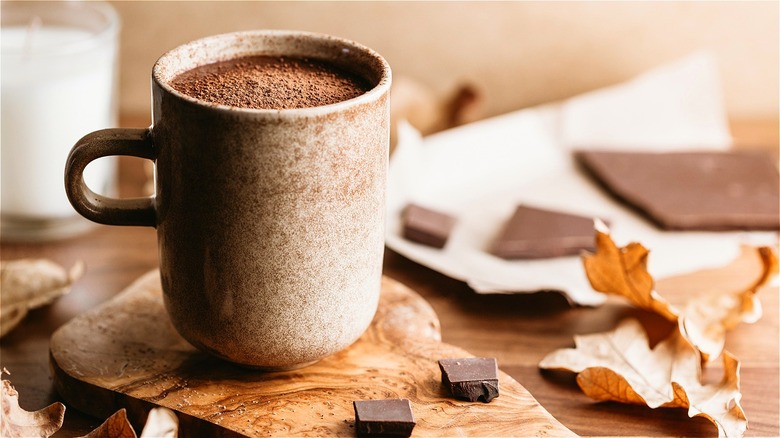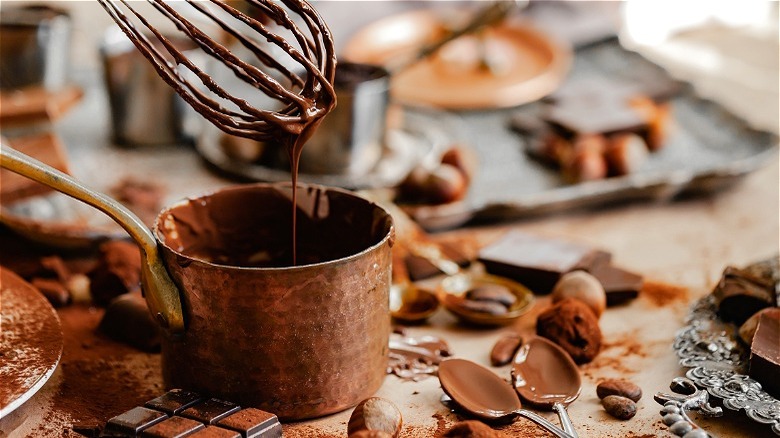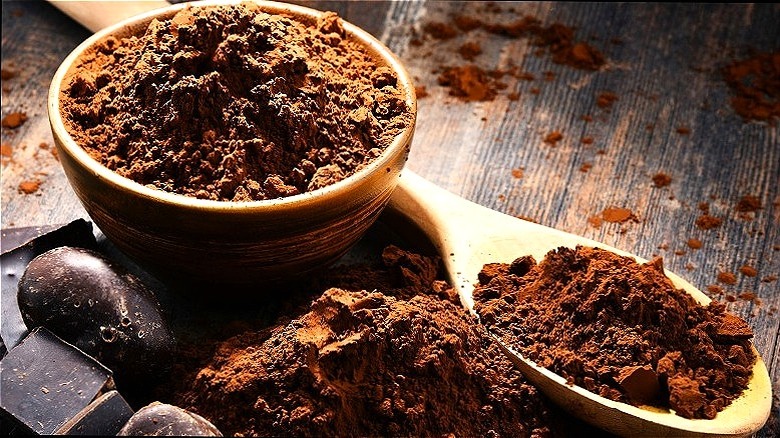What Makes Dutch Hot Chocolate Unique?
We may receive a commission on purchases made from links.
Who doesn't love a hot cup of hot chocolate on a cold winter day? According to a 2021 survey conducted by One Poll via Stuffed Puffs: When it came to activities enjoyed during the cold season, 48% of 2,000 participants looked forward to drinking hot chocolate more than cuddling up in front of a warm cozy fire and even more than enjoying the first snowfall of the year (per StudyFinds).
If you've ever wondered whether there were major differences between hot cocoa and hot chocolate, MasterClass outlines their distinctiveness. While hot cocoa is defined by its ingredients, made usually with cocoa powder, water, milk, and sometimes other additives, hot chocolate tends to be much richer and is made with real chocolate pieces and milk, often cooked and melted together into a luscious creamy liquid over the stove.
What's Cooking America notes that hot chocolate has been a variable drink since as early as the first Meso-American civilization enjoyed ground cocoa beans with water and assorted spices between 1500-400 BC. Beyond its everyday use in Spanish countries since its ancient beginning, many regionally specific variations of hot chocolate now exist in many countries around the world. The Dutch, in particular, have quite a special way of making this comforting, delectable cold-weather drink.
How the Dutch make decadent hot chocolate
MasterClass showcases how various countries have cultivated their own recipes for the creamy chocolate beverage. Columbian hot chocolate, or chocolate santafereño (per Atlas Obscura), often includes the extra flavors of honey and cinnamon, with a salted melty cheese revelation at the bottom of each mug. Italian hot chocolate includes cornstarch to thicken the cocoa-rich beverage. If you're looking for instructions on how to make the ultimate hot chocolate from scratch, however, look to no other than the Dutch for tips.
Yet, in the beloved Dutch version, there are no major surprises waiting to be revealed apart from using quality ingredients. Dutch hot chocolate (or warme chocolademelk) is richer than any standard recipe due to the extra teaspoon of cocoa powder and the occasional shot of liquor, Amsterdam-Now says Dutch hot chocolate contains not only dark chocolate but also an egg yolk for additional creaminess.
Of course, you can make your own mug of warme chocolademelk at home, egg yolk optional. You can use whole milk along with quality dark chocolate and Dutch cocoa powder. Unique additions of brandy and rum are also added for an adult-only drink on occasion. Warmed milk has its own level of richness, but when mixed with Dutch cocoa powder, transforms into an elevated version of the popular chocolate beverage.
What sets Dutch cocoa apart from other varieties?
Those residing in the Netherlands have a long-winded connection to cocoa powder production since the country is in part, responsible for streamlining this much-loved baking necessity. According to History, in 1828 Dutch chemist, Coenraad van Houten became responsible for the beginning of cocoa powder's mass production with his ingenious trials of using alkaline salts to simplify the mixing process of water and dry chocolate. Fast forwarding to the 21st century, the CBI Ministry of Foreign Affairs claims the Netherlands stands as the largest importer of cocoa beans in the world, serving simultaneously as a top contender for cocoa powder manufacturing.
MarthaStewart.com claims Dutch cocoa powder has a darker color and milder taste due to the alkalization process. The use of salts removes acidity in cocoa beans and creates a more subtle flavor than the sometimes sharp notes of natural cocoa powder. Cooks Illustrated finds when Dutch cocoa powder is used instead of natural cocoa to make hot chocolate, the flavor expands and has a more pronounced dark chocolate taste. If you want to level up your next mug of this warm wintry treat, consider trying Dutch cocoa powder: If you're feeling extra daring, include that optional shot of Rum as a prime finishing touch. As for the egg yolk, well, that's up to you.


